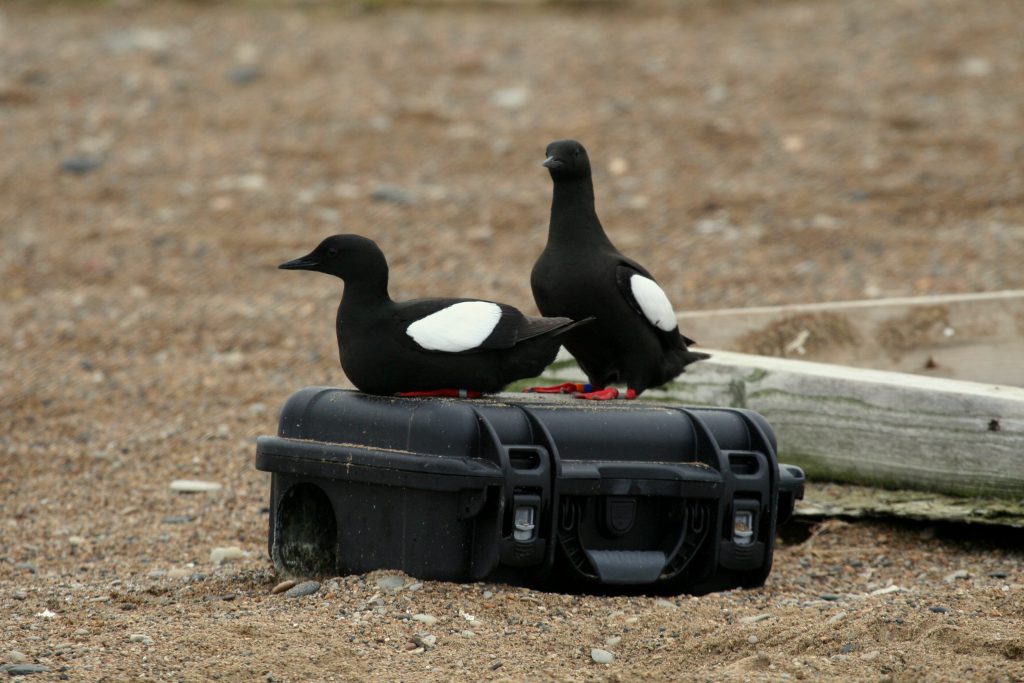By George Divoky

The Black Guillemots on Cooper Island continued to show signs of a turnaround from the poor breeding season of 2018 as egg laying and incubations has occurred in over 75 nests this year, compared to only 25 last year. The breeding population saw the recruitment of 20 birds that had fledged from the island in past years but had yet to breed. This is important since it shows that even with the decreased reproductive success and poor ice conditions of recent years, some birds are surviving to breeding age (typically 3-years of age) and returning to their natal colony, Cooper Island. A major surprise was the return of a bird that fledged from the colony in 2012 and had not been seen since.
Unlike last year when daily nest checks found recently laid eggs being abandoned by parents, this year has found all eggs being regularly incubated. Incubation is the least energetically demanding stage of breeding as the parent birds, which both incubate, take shifts of approximately 12 hours each day, having the remainder of the day to forage for fish. Last year’s large-scale desertion of nests with eggs indicated birds were either starting incubation in poor condition or encountering low availability of prey during incubation. Discovering the potential reasons for the differences between the last two years will have to wait until the fall when I have internet access to environmental data.
While our daily nest checks have provided hope for high hatching success this year, other observations while we walk around the colony are causes for concern. Most noticeable is the almost complete lack of guillemots sitting outside near nest sites or at the edge of the pond in the center of the colony, where guillemots have typically roosted when not incubating eggs or feeding young. The daily period of colony attendance, approximately midnight to noon, used to have birds throughout the colony, while this year we see only the occasional lone bird or nonbreeding pair. There is little visual evidence that the island supports a colony of over 150 birds. Additionally, in early July we experienced a rapid disappearance of sea ice with the island being nearly surrounded by ice to no ice in sight in 2-3 days. Both of these factors suggest that, despite the positive indicators seen in breeding effort and nest attendance, there are reasons to be concerned about the upcoming period of nestling growth and survival.
Read more coverage and field reports at www.proteusscicomm.org